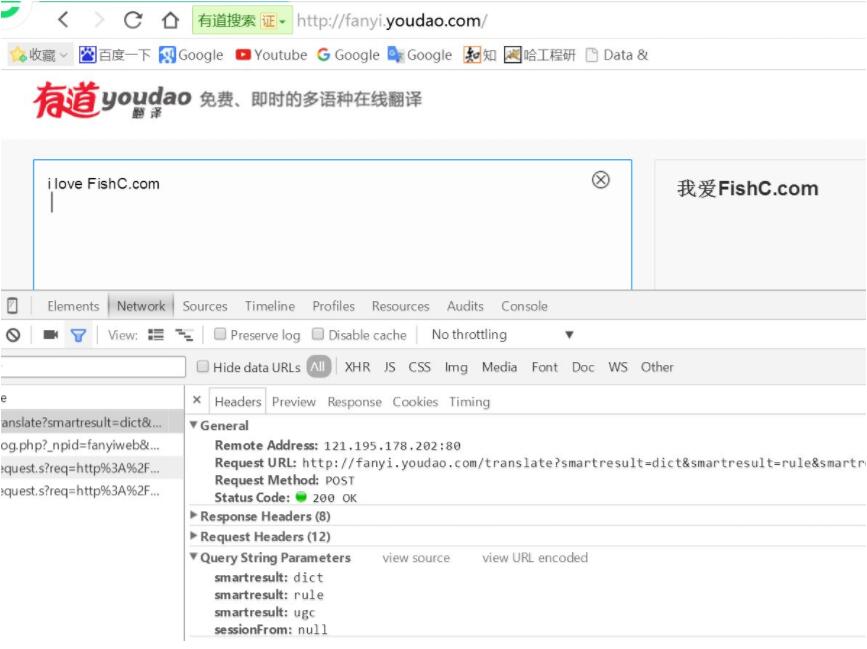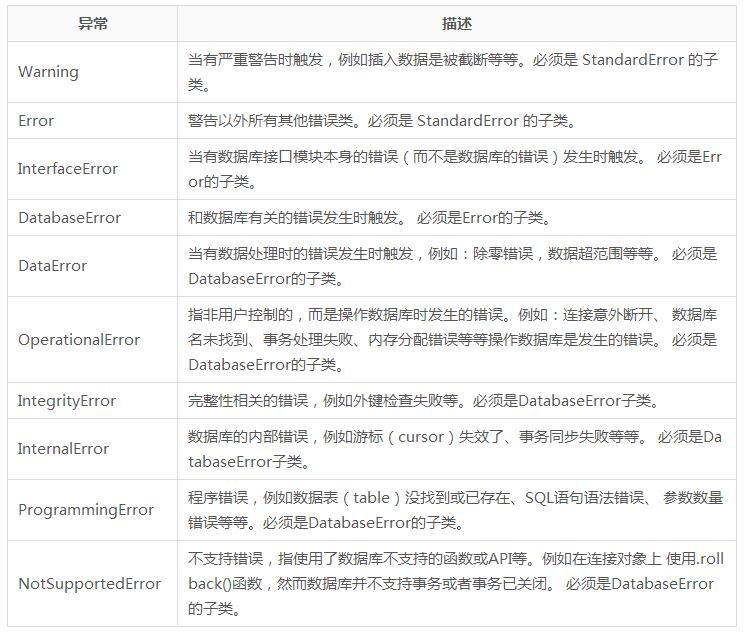Python实现的Excel文件读写类
本文实例讲述了Python实现的Excel文件读写类。分享给大家供大家参考。具体如下:
#coding=utf-8
#######################################################
#filename:ExcelRW.py
#author:defias
#date:2015-4-27
#function:read or write excel file
#######################################################
import xlrd
import xlwt
import xlutils.copy
import os.path
class XlsEngine():
"""
The XlsEngine is a class for excel operation
Usage:
xlseng = XlsEngine('filePath')
"""
def __init__(self,xlsname):
"""
define class variable
"""
self.xls_name = xlsname #file name
self.xlrd_object = None #workbook object
self.isopentrue = False #file open flag
def open(self):
"""
open a xls file
Usage:
xlseng.open()
"""
try:
self.xlrd_object = xlrd.open_workbook(self.xls_name)
self.isopentrue = True
print('[%s,%s].'%(self.isopentrue,self.xlrd_object))
except:
self.isopentrue = False
self.xlrd_object = None
print('open %s failed.'%self.xls_name)
def info(self):
"""
show xls file information
Usage:
xlseng.info()
"""
if self.isopentrue == True:
for sheetname in self.xlrd_object.sheet_names():
worksheet = self.xlrd_object.sheet_by_name(sheetname)
print('%s:(%d row,%d col).'%(sheetname,worksheet.nrows,worksheet.ncols))
else:
print('file %s is not open.'%self.xls_name)
def readcell(self,sheetname='sheet1',rown=0,coln=0):
"""
read file's a cell content
Usage:
xlseng.readcell('sheetname',rown,coln)
"""
try:
if self.isopentrue == True:
worksheets = self.xlrd_object.sheet_names()
if sheetname not in worksheets:
print('%s is not exit.'%sheetname)
return False
worksheet = self.xlrd_object.sheet_by_name(sheetname)
cell = worksheet.cell_value(rown,coln)
print('[file:%s,sheet:%s,row:%s,col:%s]:%s.'%(self.xls_name,sheetname,rown,coln,cell))
else:
print('file %s is not open.'%self.xls_name)
except:
print('readcell is false! please check sheetn rown and coln is right.')
def readrow(self,sheetname='sheet1',rown=0):
"""
read file's a row content
Usage:
xlseng.readrow('sheetname',rown)
"""
try:
if self.isopentrue == True:
worksheets = self.xlrd_object.sheet_names()
if sheetname not in worksheets:
print('%s is not exit.'%sheetname)
return False
worksheet = self.xlrd_object.sheet_by_name(sheetname)
row = worksheet.row_values(rown)
print('[file:%s,sheet:%s,row:%s]:%s.'%(self.xls_name,sheetname,rown,row))
else:
print('file %s is not open.'%self.xls_name)
except:
print('readrow is false! please check sheetn rown is right.')
def readcol(self,sheetname='sheet1',coln=0):
"""
read file's a col content
Usage:
xlseng.readcol('sheetname',coln)
"""
try:
if self.isopentrue == True:
worksheets = self.xlrd_object.sheet_names()
if sheetname not in worksheets:
print('%s is not exit.'%sheetname)
return False
worksheet = self.xlrd_object.sheet_by_name(sheetname)
col = worksheet.col_values(coln)
print('[file:%s,sheet:%s,col:%s]:%s.'%(self.xls_name,sheetname,coln,col))
else:
print('file %s is not open.'%self.xls_name)
except:
print('readcol is false! please check sheetn coln is right.')
def writecell(self,value='',sheetn=0,rown=0,coln=0):
"""
write a cell to file,other cell is not change
Usage:
xlseng.writecell('str',sheetn,rown,coln)
"""
try:
if self.isopentrue == True:
xlrd_objectc = xlutils.copy.copy(self.xlrd_object)
worksheet = xlrd_objectc.get_sheet(sheetn)
worksheet.write(rown,coln,value)
xlrd_objectc.save(self.xls_name)
print('writecell value:%s to [sheet:%s,row:%s,col:%s] is ture.'%(value,sheetn,rown,coln))
else:
print('file %s is not open.'%self.xls_name)
except:
print('writecell is false! please check.')
def writerow(self,values='',sheetn=0,rown=0,coln=0):
"""
write a row to file,other row and cell is not change
Usage:
xlseng.writerow('str1,str2,str3...strn',sheetn,rown.coln)
"""
try:
if self.isopentrue == True:
xlrd_objectc = xlutils.copy.copy(self.xlrd_object)
worksheet = xlrd_objectc.get_sheet(sheetn)
values = values.split(',')
for value in values:
worksheet.write(rown,coln,value)
coln += 1
xlrd_objectc.save(self.xls_name)
print('writerow values:%s to [sheet:%s,row:%s,col:%s] is ture.'%(values,sheetn,rown,coln))
else:
print('file %s is not open.'%self.xls_name)
except:
print('writerow is false! please check.')
def writecol(self,values='',sheetn=0,rown=0,coln=0):
"""
write a col to file,other col and cell is not change
Usage:
xlseng.writecol('str1,str2,str3...',sheetn,rown.coln)
"""
try:
if self.isopentrue == True:
xlrd_objectc = xlutils.copy.copy(self.xlrd_object)
worksheet = xlrd_objectc.get_sheet(sheetn)
values = values.split(',')
for value in values:
worksheet.write(rown,coln,value)
rown += 1
xlrd_objectc.save(self.xls_name)
print('writecol values:%s to [sheet:%s,row:%s,col:%s] is ture.'%(values,sheetn,rown,coln))
else:
print('file %s is not open.'%self.xls_name)
except:
print('writecol is false! please check.')
def filecreate(self,sheetnames='sheet1'):
"""
create a empty xlsfile
Usage:
filecreate('sheetname1,sheetname2...')
"""
try:
if os.path.isfile(self.xls_name):
print('%s is exit.'%self.xls_name)
return False
workbook = xlwt.Workbook()
sheetnames = sheetnames.split(',')
for sheetname in sheetnames:
workbook.add_sheet(sheetname,cell_overwrite_ok=True)
workbook.save(self.xls_name)
print('%s is created.'%self.xls_name)
except:
print('filerator is false! please check.')
def addsheet(self,sheetnames='sheet1'):
"""
add sheets to a exit xlsfile
Usage:
addsheet('sheetname1,sheetname2...')
"""
try:
if self.isopentrue == True:
worksheets = self.xlrd_object.sheet_names()
xlrd_objectc = xlutils.copy.copy(self.xlrd_object)
sheetnames = sheetnames.split(',')
for sheetname in sheetnames:
if sheetname in worksheets:
print('%s is exit.'%sheetname)
return False
for sheetname in sheetnames:
xlrd_objectc.add_sheet(sheetname,cell_overwrite_ok=True)
xlrd_objectc.save(self.xls_name)
print('addsheet is ture.')
else:
print("file %s is not open \n"%self.xls_name)
except:
print('addsheet is false! please check.')
"""
def chgsheet(self,sheetn,values):
def clear(self):
"""
if __name__ == '__main__':
#初始化对象
xlseng = XlsEngine('E:\\Code\\Python\\test2.xls')
#新建文件,可以指定要新建的sheet页面名称,默认值新建sheet1
#print("\nxlseng.filecreate():")
#xlseng.filecreate('newesheet1,newesheet2,newesheet3')
#打开文件
print("xlseng.open():")
xlseng.open()
#添加sheet页
print("\nxlseng.addsheet():")
xlseng.addsheet('addsheet1,addsheet2,addsheet3')
#输出文件信息
print("\nxlseng.info():")
xlseng.info()
#读取sheet1页第3行第3列单元格数据(默认读取sheet1页第1行第1列单元格数据)
print("\nxlseng.readcell():")
xlseng.readcell('sheet1',2,2)
#读取sheet1页第2行的数据(默认读取sheet1页第1行的数据)
print("\nxlseng.readrow():")
xlseng.readrow('sheet1',1)
#读取sheet1页第3列的数据(默认读取sheet1页第1列的数据)
print("\nxlseng.readcol():")
xlseng.readcol('sheet1',2)
#向第一个sheet页的第2行第4列写字符串数据‘I am writecell writed'(默认向第一个sheet页的第1行第1列写空字符串)
print("\nxlseng.writecell():")
xlseng.writecell('I am writecell writed',0,1,3)
#向第一个sheet页写一行数据,各列的值为‘rowstr1,rowstr2,rowstr3',从第3行第4列开始写入(默认向第一个sheet页写一行数据,值为‘',从第1行第1列开始写入)
print("\nxlseng.writerow():")
xlseng.writerow('rowstr1,rowstr2,rowstr3',0,2,3)
#向第一个sheet页写一列数据,各行的值为‘colstr1,colstr2,colstr3,colstr4',从第4行第4列开始写入(默认向第一个sheet页写一列数据,值为‘',从第1行第1列开始写入)
print("\nxlseng.writecol():")
xlseng.writecol('colstr1,colstr2,colstr3,colstr4',0,3,3)
希望本文所述对大家的Python程序设计有所帮助。


